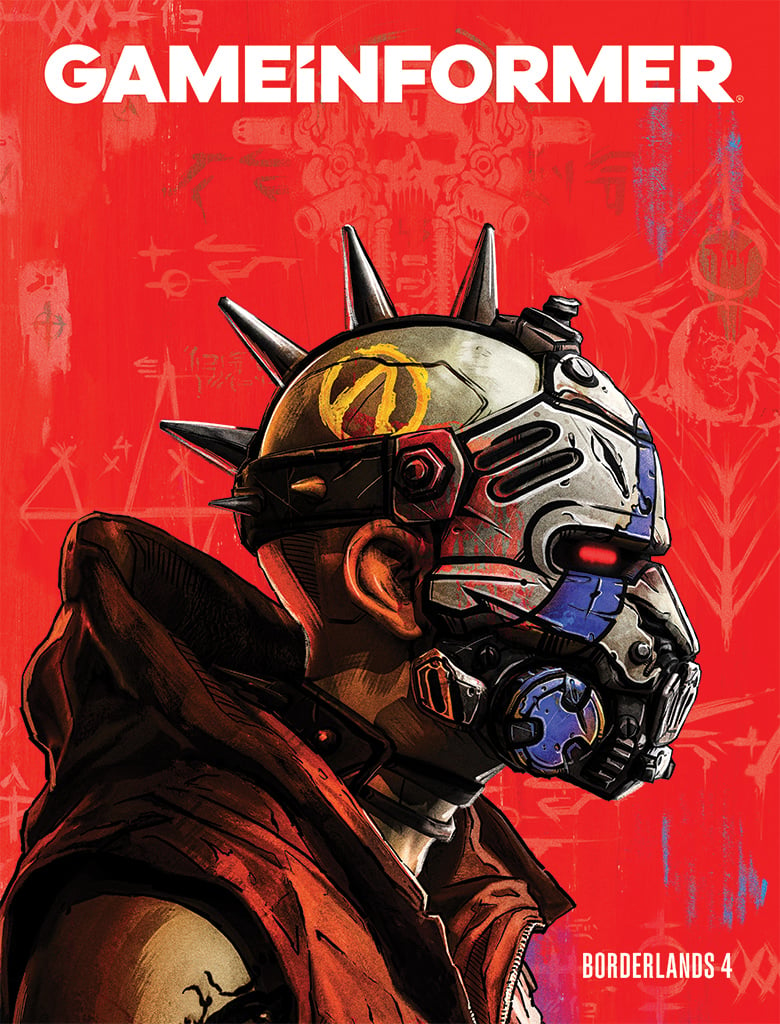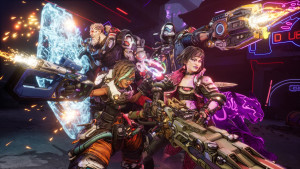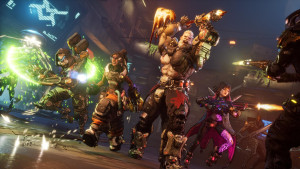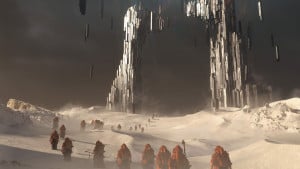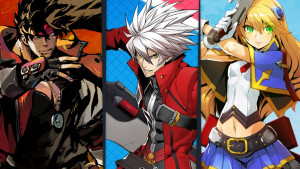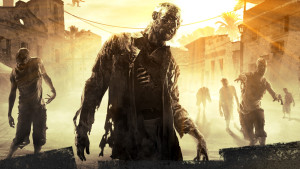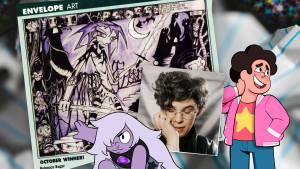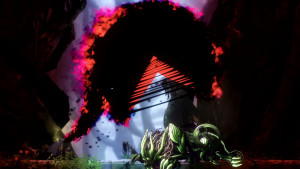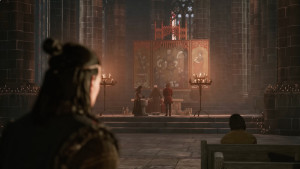Last chance to get your Borderlands 4 issue when ordered by July 1st. Subscribe Now!
Gameography: Dan Houser of Rockstar Games

Dan Houser, who helped found Rockstar Games with his brother Sam, has quietly assembled one of the most impressive careers in game writing history. Though he’s traditionally shied away from the spotlight, we were able to interview Houser for the latest issue of Game Informer (#225). To expand your view of Houser’s career as a game writer, we’ve assembled this list of some of his greatest works. As you will see, it’s a varied and impressive resume, one that includes some of the most dramatic and interesting game stories ever made.

Grand Theft Auto: London 1969 (1999)
This was one of Houser’s first projects at Rockstar, begun shortly after he joined his brother Sam at the company. Though GTA was still a relatively little-known franchise, the series’ 2D entries helped establish the open-world formula that would go on to revolutionize the industry after GTA III. London 1969 was a mission pack for the original, top-down Grand Theft Auto, and prefigured Rockstar’s later attention to pop-culture detail with references to the Sex Pistols’ Sid Vicious and the infamous British gangsters, the Kray twins. The writing was infectious, full of period “Swinging London” vibe and great use of Cockney rhyming slang.

Grand Theft Auto III (2001)
This was the game that broke Rockstar into the mainstream, along the way making the open-world genre a staple in gaming. The game, which brought GTA into three dimensions, traced the saga of the then-nameless and anonymous character Claude (whose name was revealed late in San Andreas) as he negotiated the treacherous world of organized crime in the fictionalized east coast metropolis of Liberty City. Along the way, players met such indelible characters as Salvatore Leone, 8-Ball, Catalina, Donald Love, and Toni Cipriani. Perhaps most memorable was the way Houser’s writing created a living, breathing world with dialogue from random pedestrians and the commentary of various DJs and personalities on the in-game radio stations.

Grand Theft Auto: Vice City (2002)
Coming only a year after GTA III, Vice City was another masterwork, one that put an even greater emphasis on storytelling and setting – Houser’s specialty. Set in the Miami doppelganger Vice City in 1986, Houser used the game to pay tribute to the garish 1980s and films and TV shows like Scarface and Miami Vice. Now with a protagonist who actually spoke – Tommy Vercetti – Vice City had a menagerie of incredible characters (often voiced by high-profile Hollywood actors) like Sonny Forelli (Tom Sizemore), Ken Rosenburg (William Fichtner), porn director Steve Scott (Dennis Hopper), and Lance Vance (Miami Vice star Philip Michael Thomas). The story itself was gripping, as Vercetti attempts to negotiate the snakepit of the 1980s drug trade – leading to some explosive action.
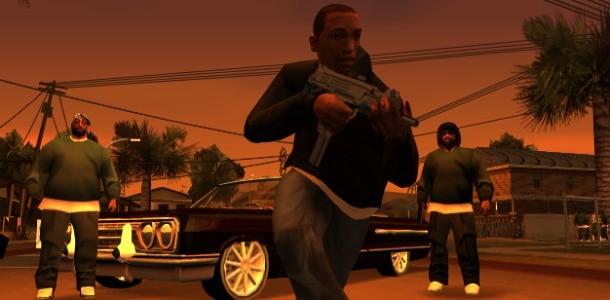
Grand Theft Auto: San Andreas (2004)
With its third PS2 GTA game, Rockstar not only topped GTA III and Vice City, it blew them out of the water with San Andreas, a game so ambitious that it captured the essence of not just one, but three fictional cities and the surrounding countryside of the fictional state of San Andreas: Los Santos (L.A.), San Fierro (San Francisco), and Las Venturas (Las Vegas). To go along with the epic scope was some of Houser’s most affecting and deep writing. The game star was Carl “CJ” Johnson, a reformed gangster who had returned to San Andreas to attend his mother’s funeral. Of course, CJ has trouble avoiding the pull of the streets – and the corruption of the Los Santos police department. CJ was the most subtle, relatable character to date, even as he traveled through a world of crime that few of the game’s players had experience in. The human, flawed CJ is in many ways a precursor to the conflicted Niko of Grand Theft Auto IV.

Grand Theft Auto: Liberty City Stories and Grand Theft Auto: Vice City Stories (2005, 2006)
For the first time in his career, Houser returned to his past works in a pair of games released for Sony’s PSP handheld. Both games maintained strong ties to the originals, but fleshed out those worlds in interesting ways, and from the perspectives of different characters. Liberty City Stories featured the exploits of Tony Cipriani, a minor character from GTA III, in an adventure set three years after the events of III. Cipriani had been expelled from the Leone family after killing a made man, and in Liberty City he’s on the comeback trail. Vice City Stories features an interesting dramatic twist by starring Victor Vance – a character who actually dies in the original Vice City. Vice City Stories has a grimmer, dramatic tone than the often-silly Vice City, and Houser considers it his most underrated writing work.
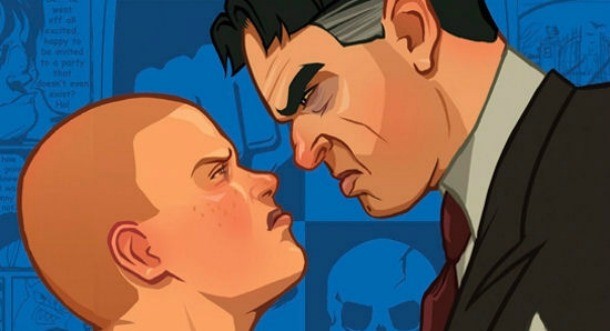
Bully (2006)
Bully remains one of the highlights of the Rockstar canon, due in no small part to Dan Houser’s perceptive, wry writing. Decried as a “Columbine simulator” before its release, the finished product was actually a sweet, slightly nostalgic tribute to high school. Set in a prestigious private school named Bullworth Academy, Bully starred a misunderstood kid named Jimmy Hopkins. Forced to overcome his own past and the often-treacherous social hierarchies of Bullworth, Jimmy’s saga is perhaps Houser’s most personal work to date. It’s also a brave project; far too few video games are set in the world of the everyday. As you would suspect from a Dan Houser-written game, Bully challenges many of your preconceptions about authority and right and wrong in a way that comes off as real, not preachy.
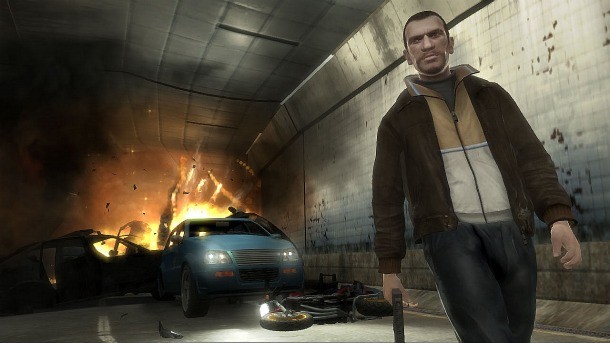
Grand Theft Auto IV (2008)
When Grand Theft Auto returned, this time to a new generation of powerful consoles, the series once again showed off Dan Houser’s trademark writing chops. Interestingly, this most American game featured an immigrant – Niko Bellic, a man of Eastern European decent with a history in both the military and illegal smuggling. Niko was the sprawling games’ center, providing GTA IV with an ambivalent, sad core. Although haunted by his past misdeeds, Niko is essentially trying to do the right thing as he sees it. His saga was fleshed out by a number of indelible characters (who could forget the hilarious steroid fiend Brucie?) and dramatic turns that made it perhaps the best-written GTA to date. Even more impressive was the way that Houser fleshed out the world, creating reams of extra content like television shows and the always-amazing radio dialogue.

Red Dead Redemption (2010)
As in Bully, Houser and Rockstar once again proved they could take on content far afield of the GTA series with aplomb. Red Dead Redemption defied industry conventional wisdom (i.e. the idea that Westerns didn’t sell in video games) and created another blockbuster franchise. As in GTA IV, the game was based around the story of a troubled protagonist, this time frontiersman John Marston. Again, the game showed Houser’s growing range as a writer, crafting a tale about the Wild West and the end of that era through the eyes of a memorable cast of characters. Few who played through the game can forget the emotional end, a testament to how far Houser has come since the days of London 1969.

The Future (2011-?)
Currently, Houser is working on new iterations in two legendary series – Max Payne 3 and the recently announced Grand Theft Auto V. Max is his first attempt at writing for the formerly Remedy-created noir hero, and is taking some risks with the series (most notably moving it to Brazil). While we know very little of GTA V, it’s definitely a return to the streets of Los Santos, a first since San Andreas.
Other Works:
Grand Theft Auto 2 (1999)
Smuggler’s Run 2: Hostile Territory (2001)
Bully: Scholarship Edition (2008)
Grand Theft Auto: Chinatown Wars (2009)
